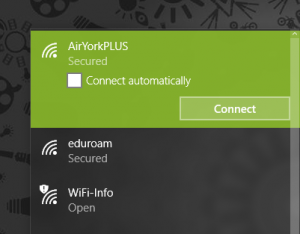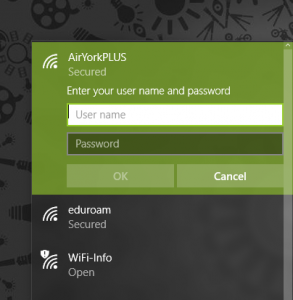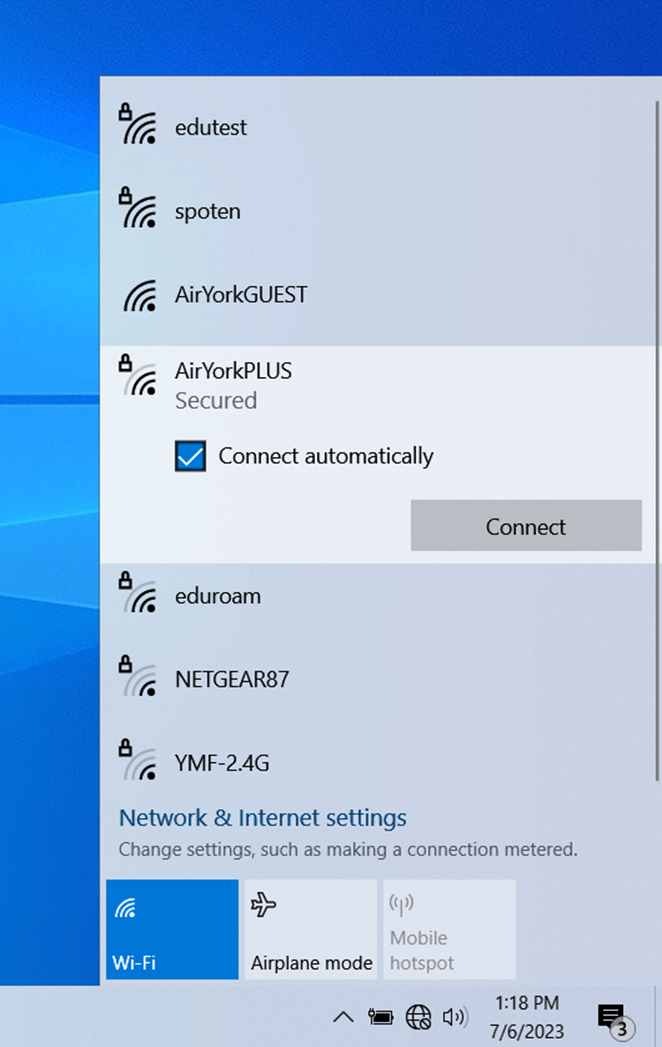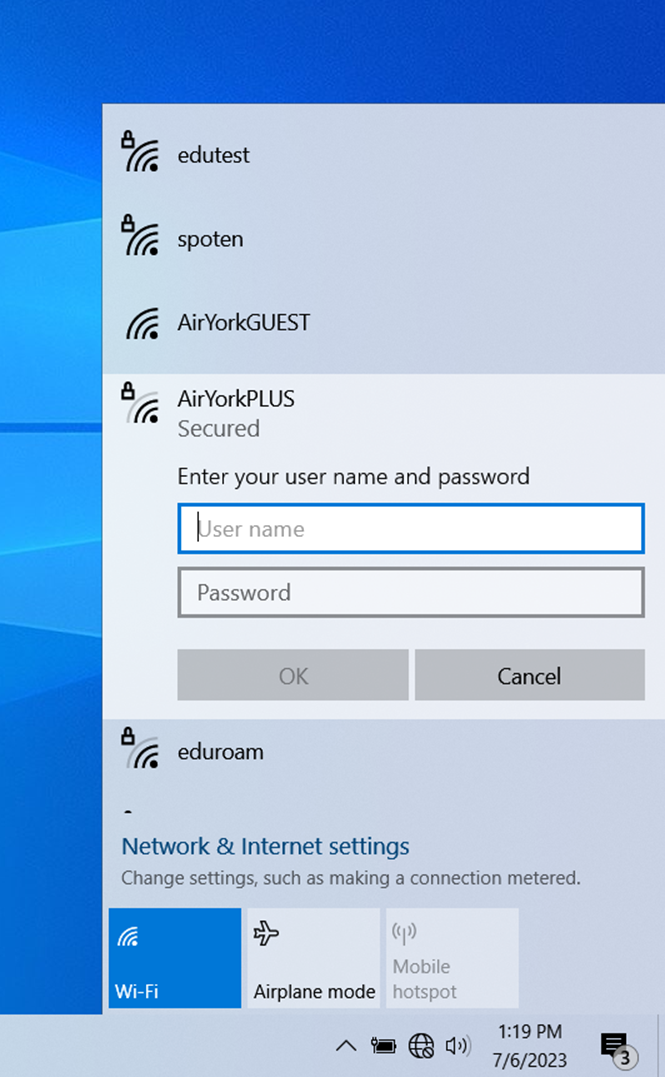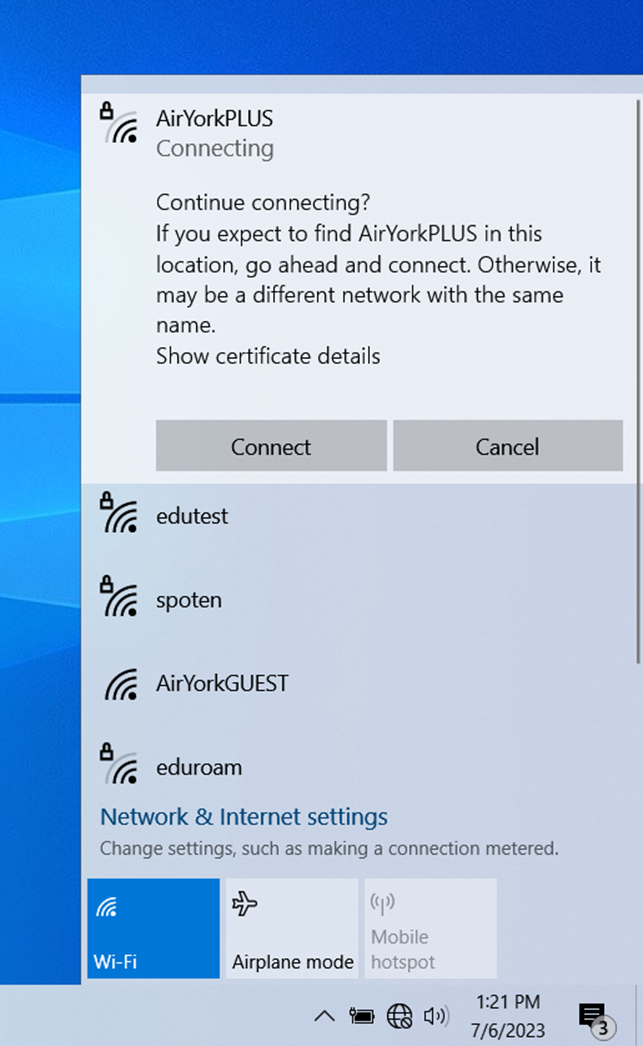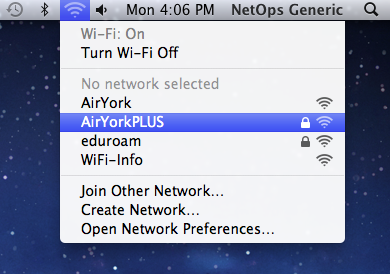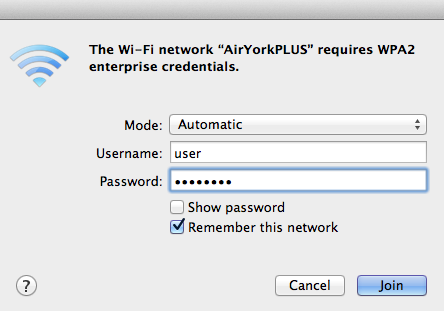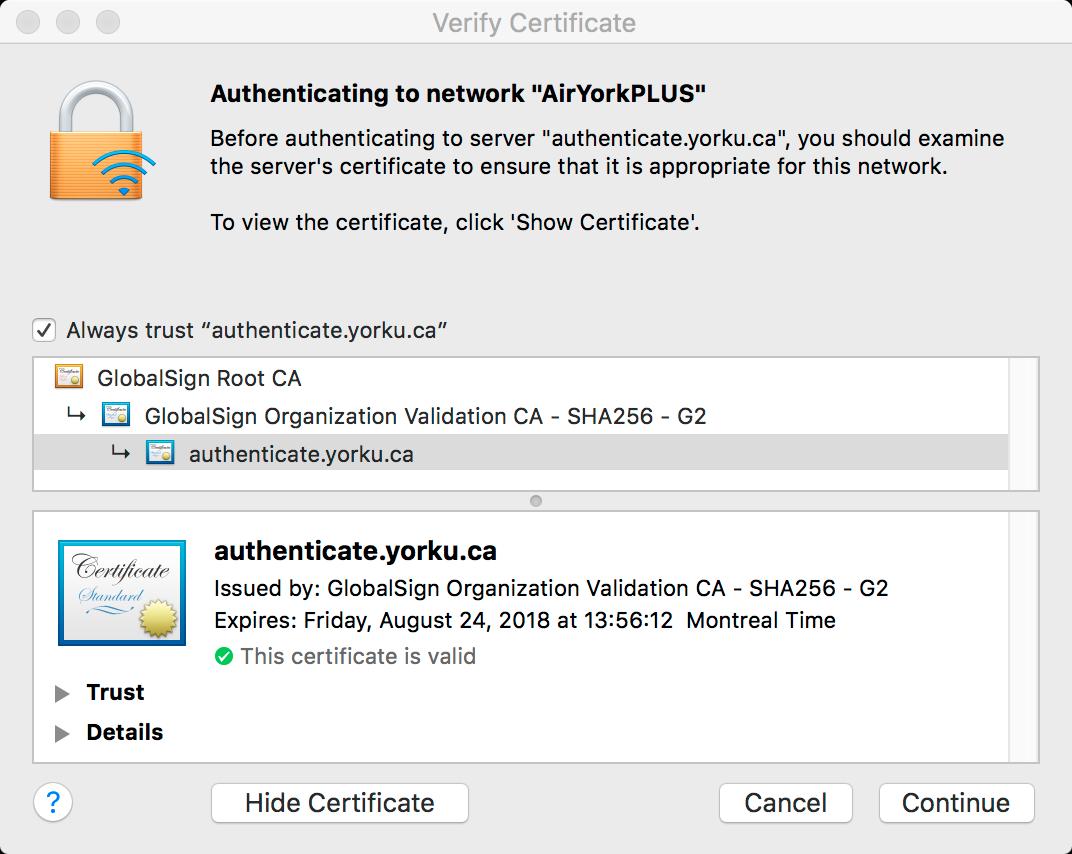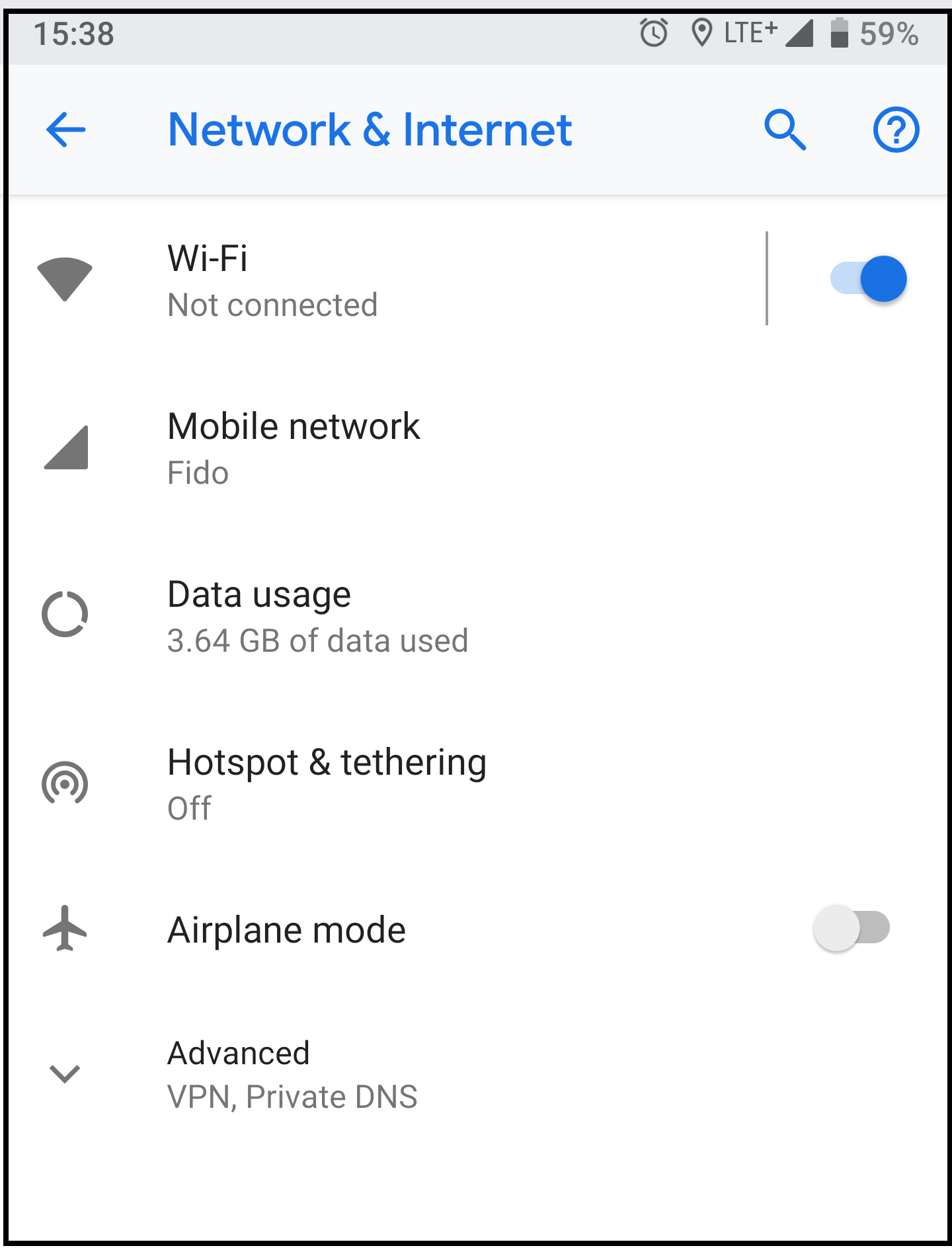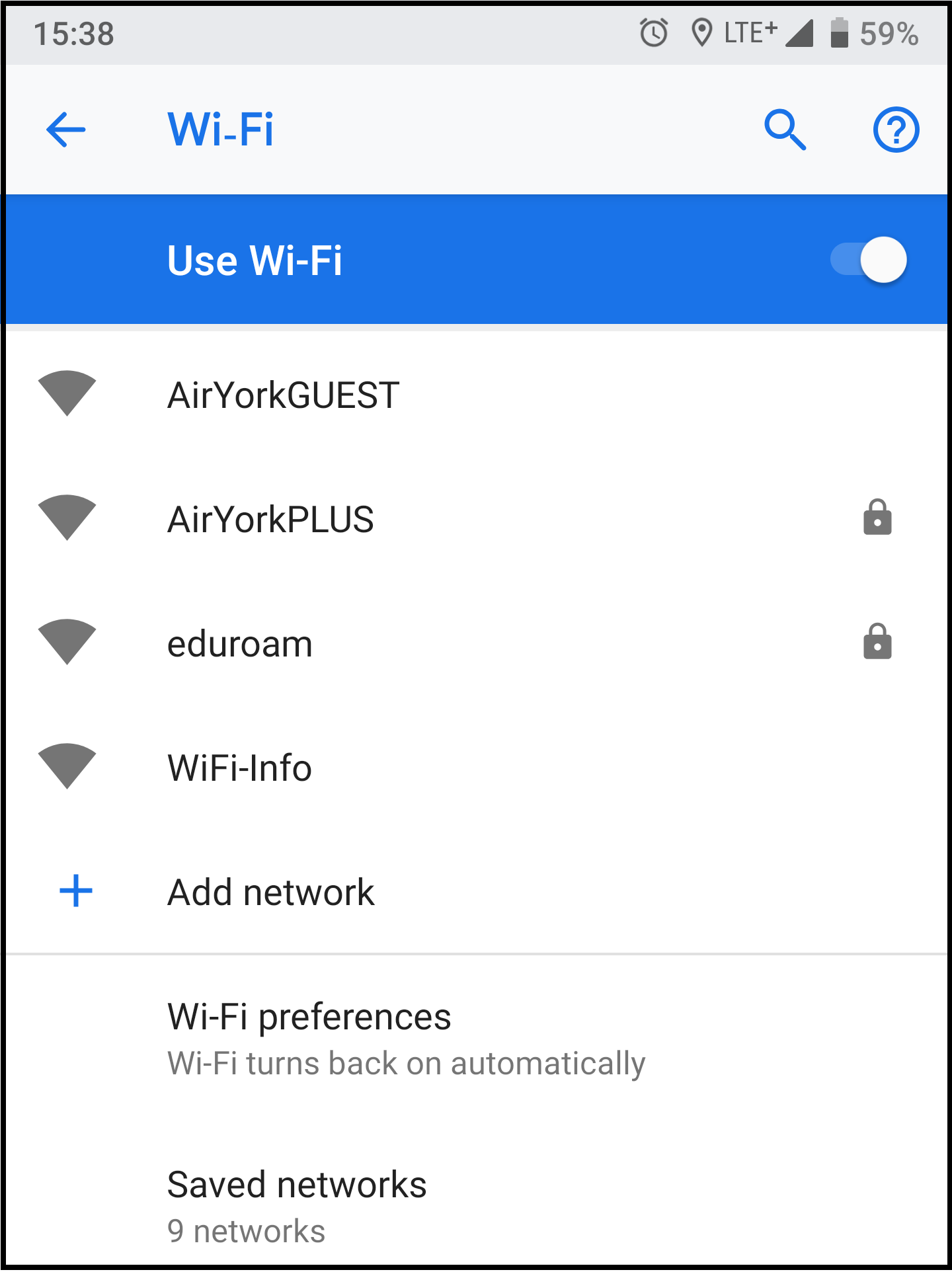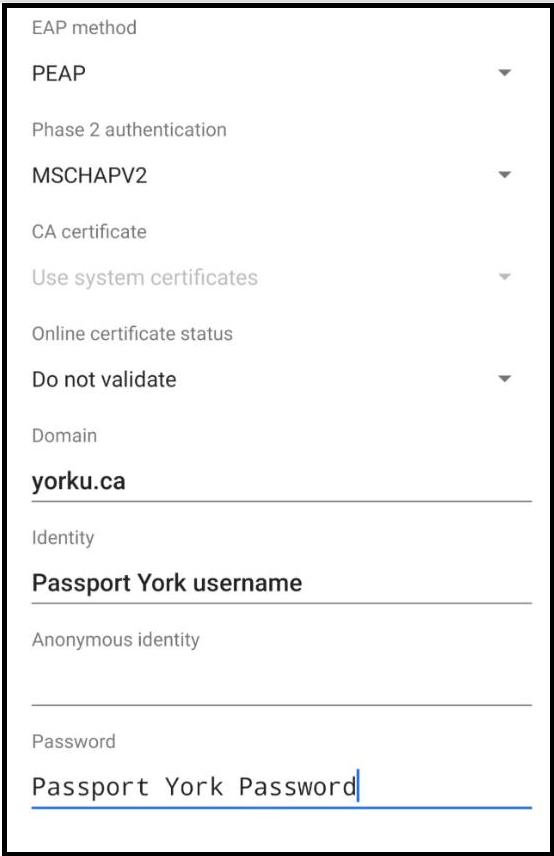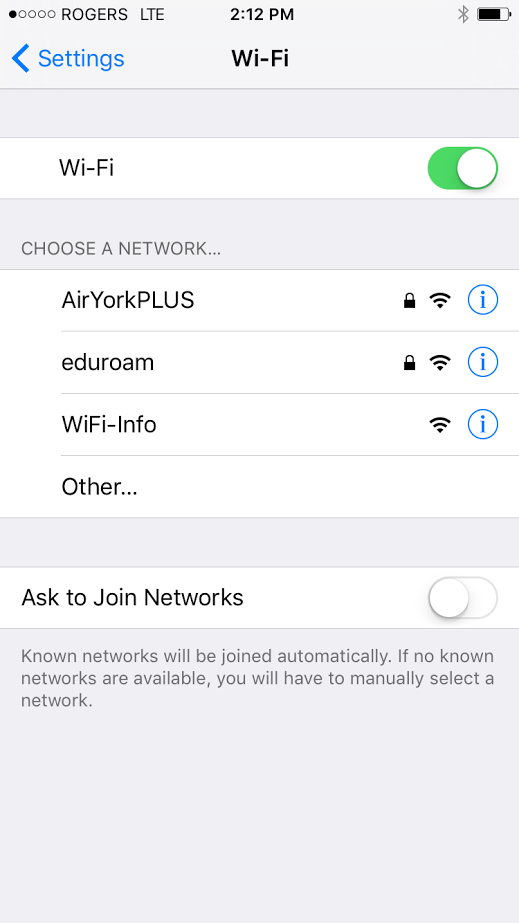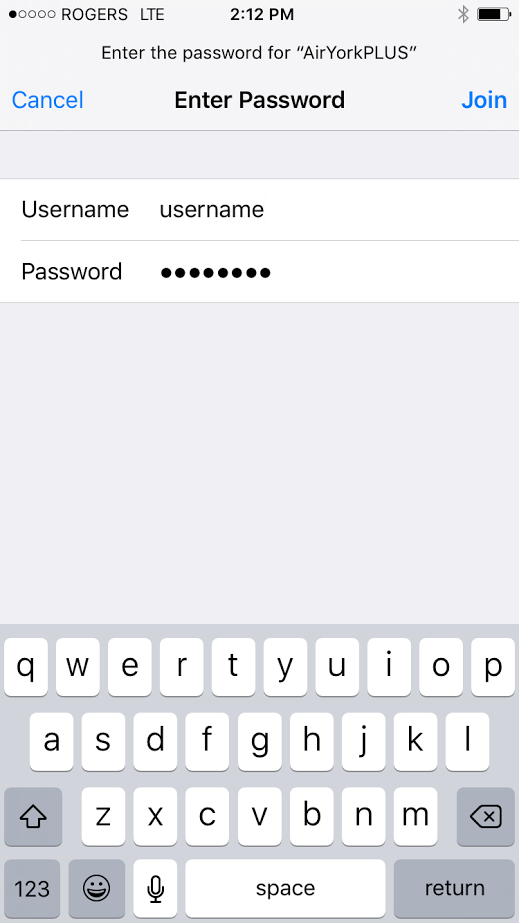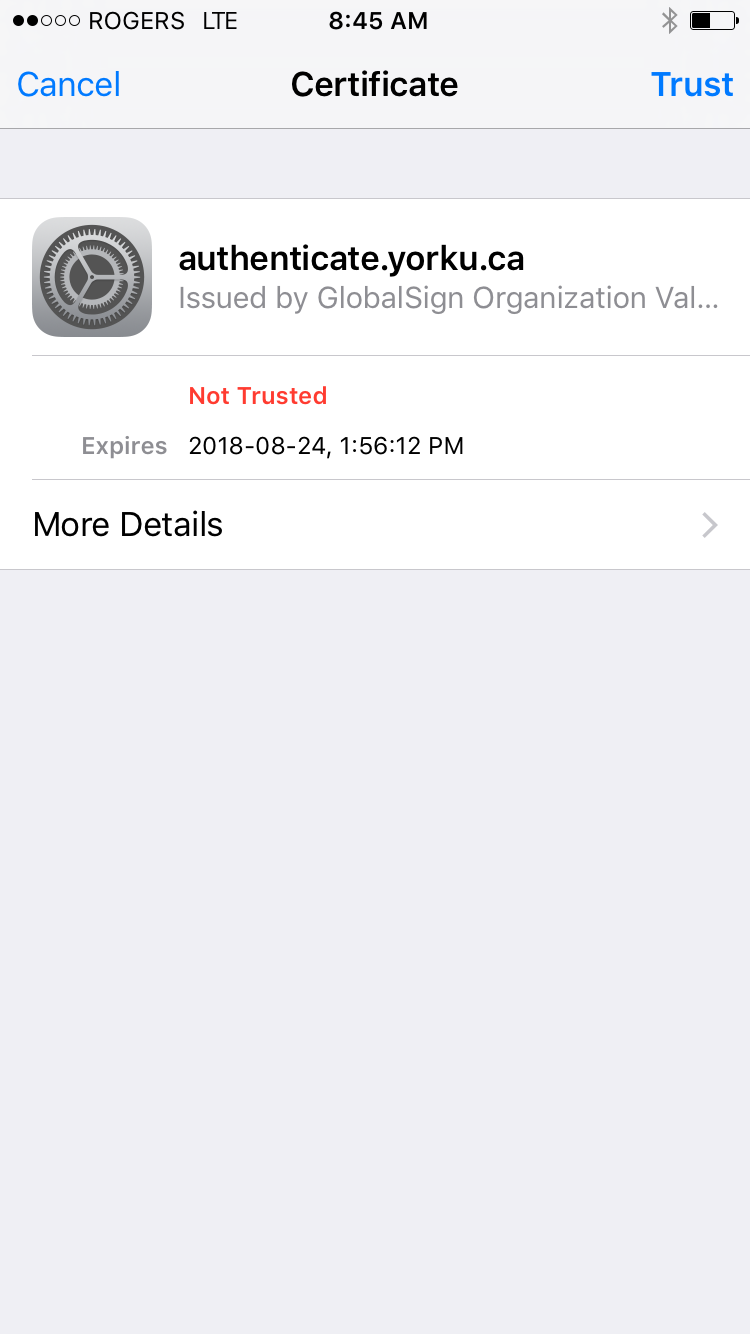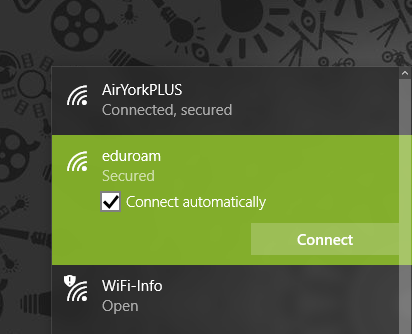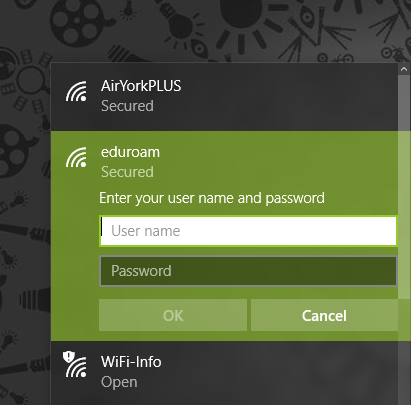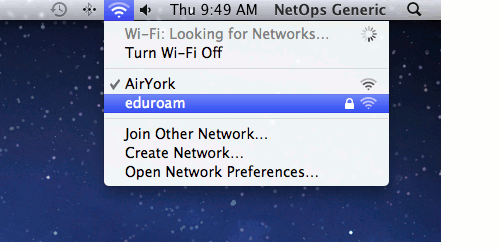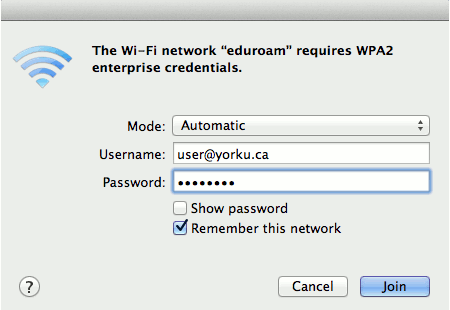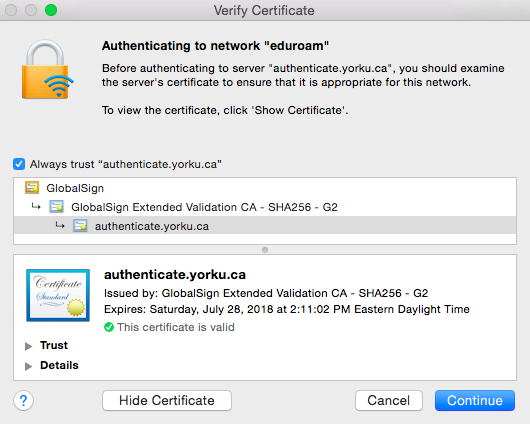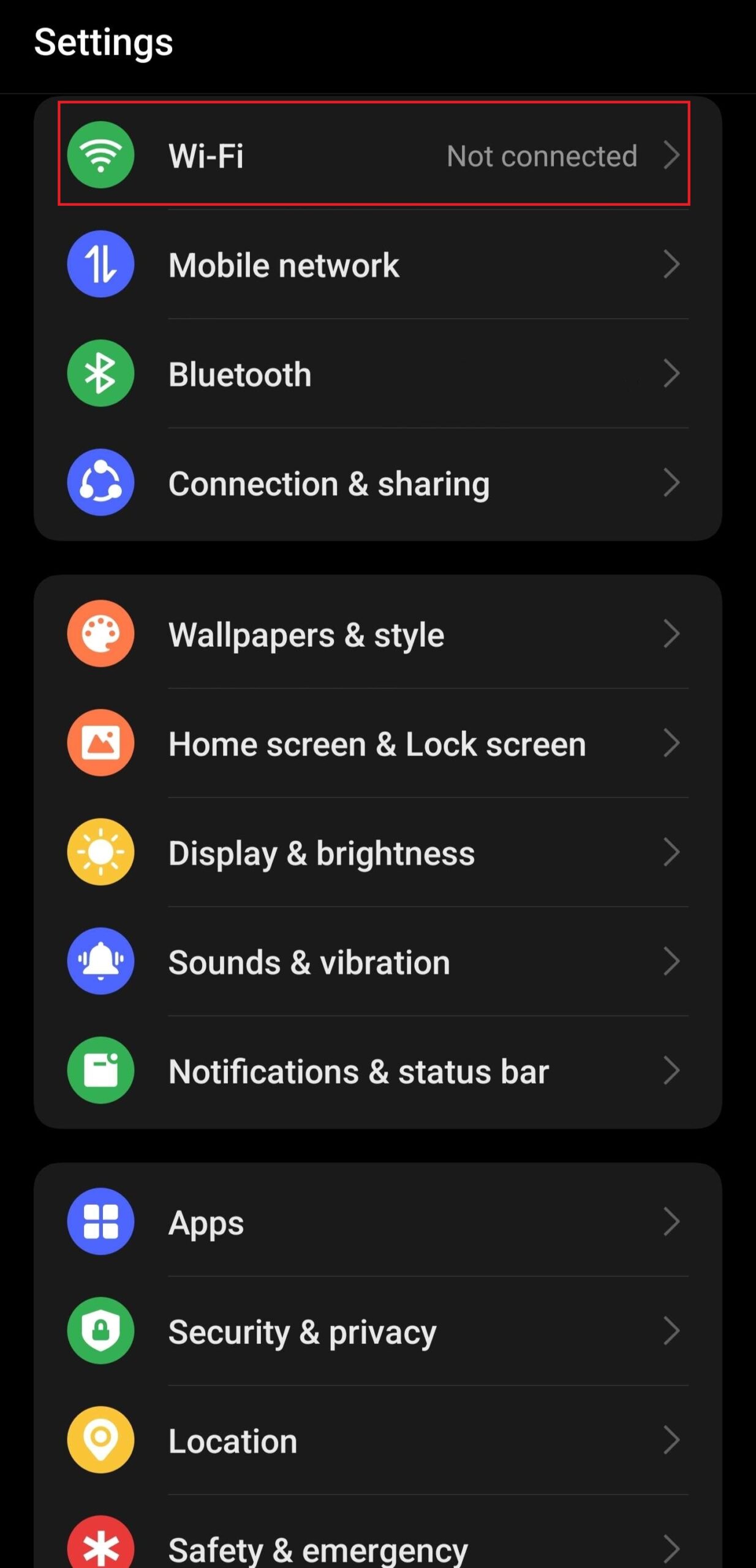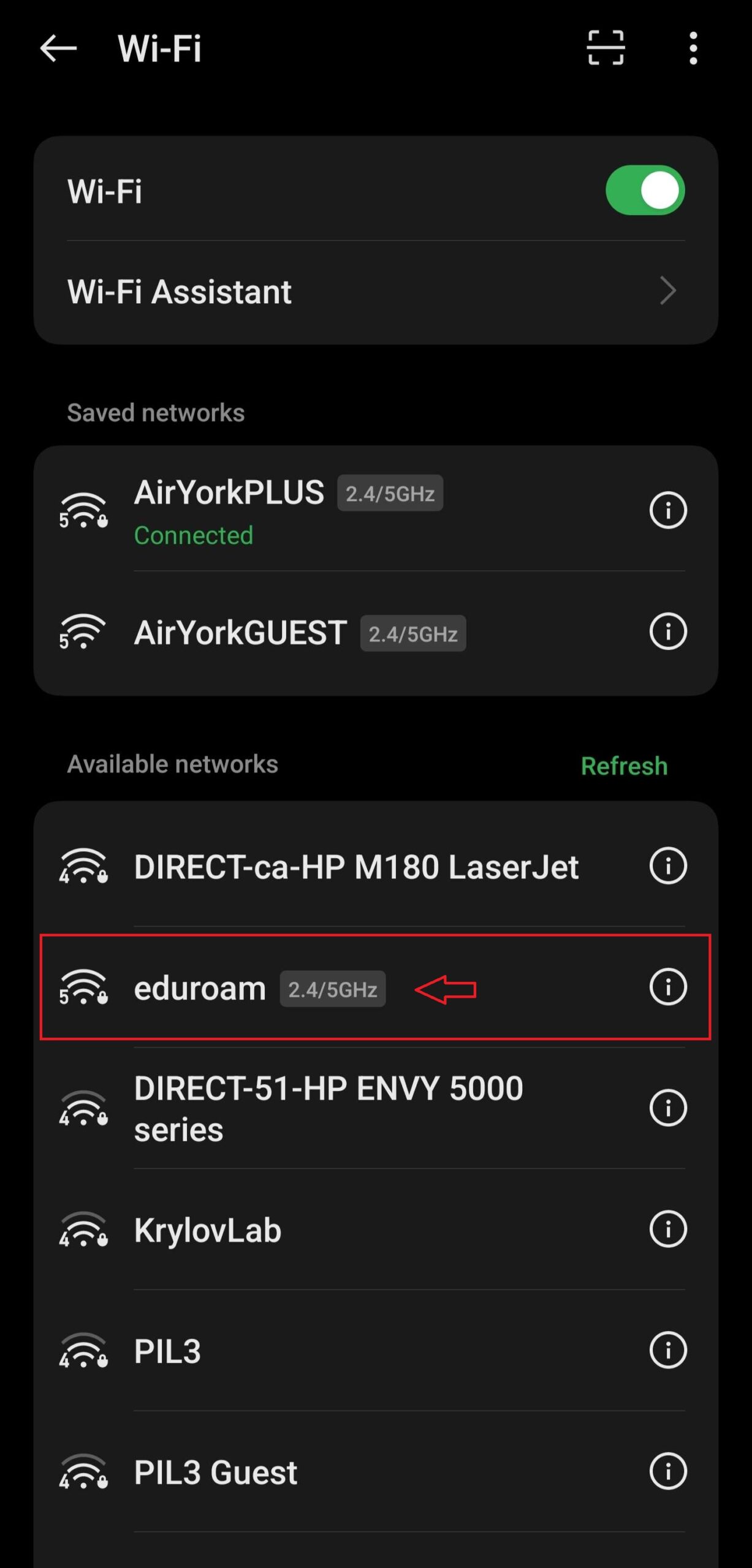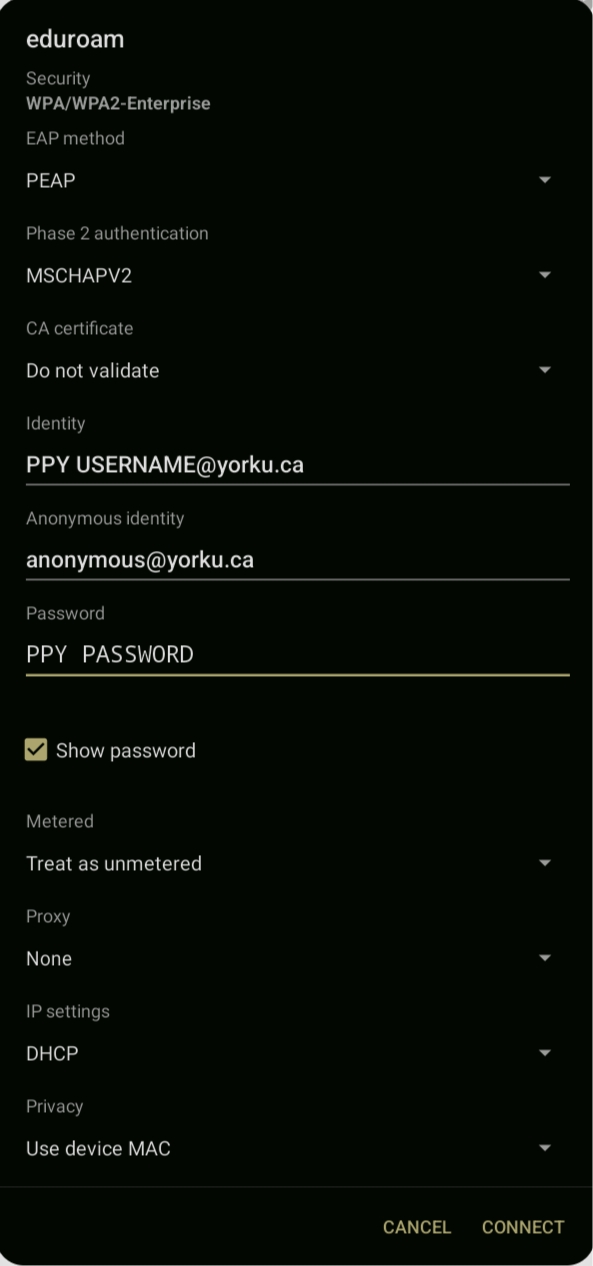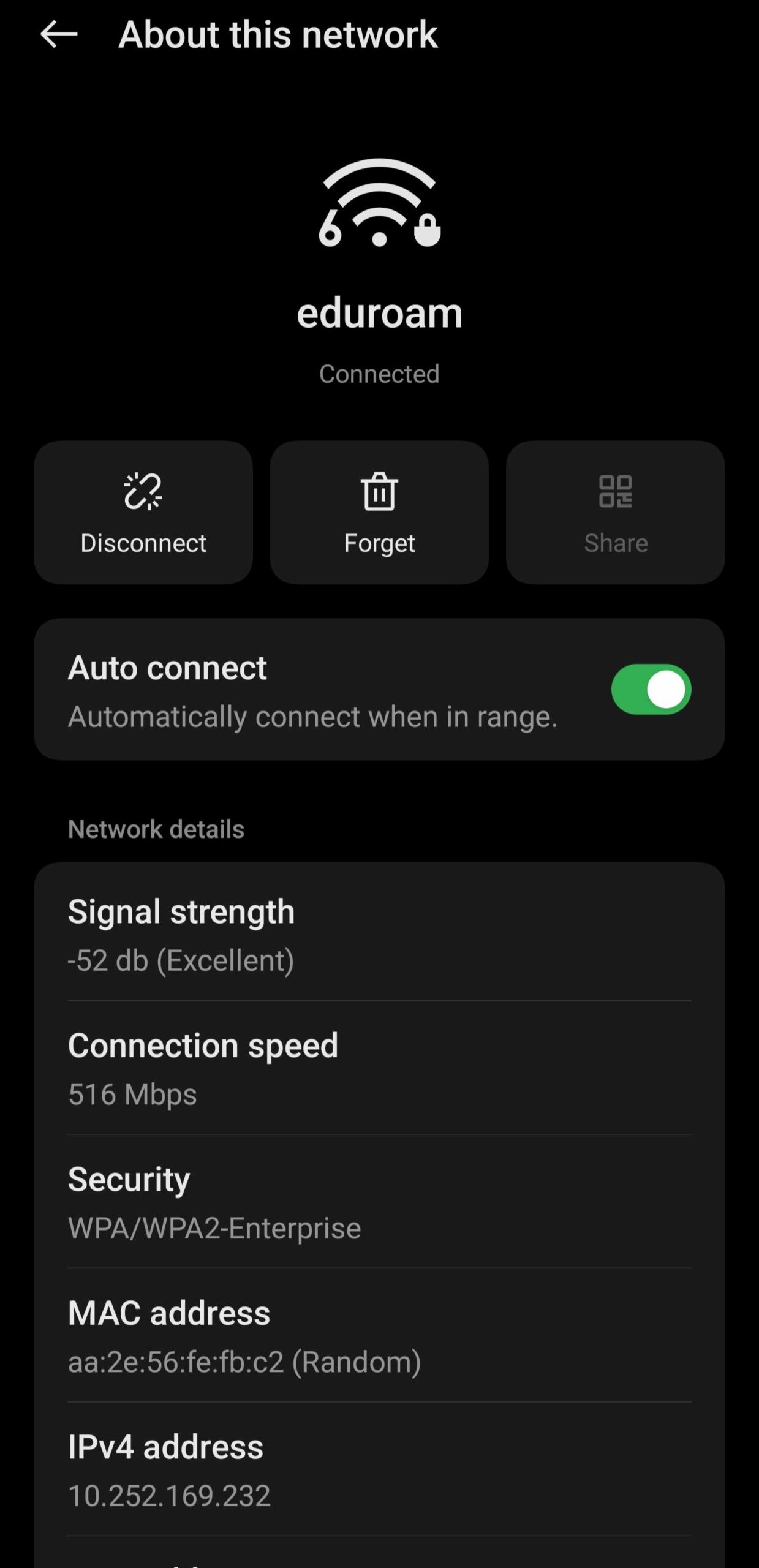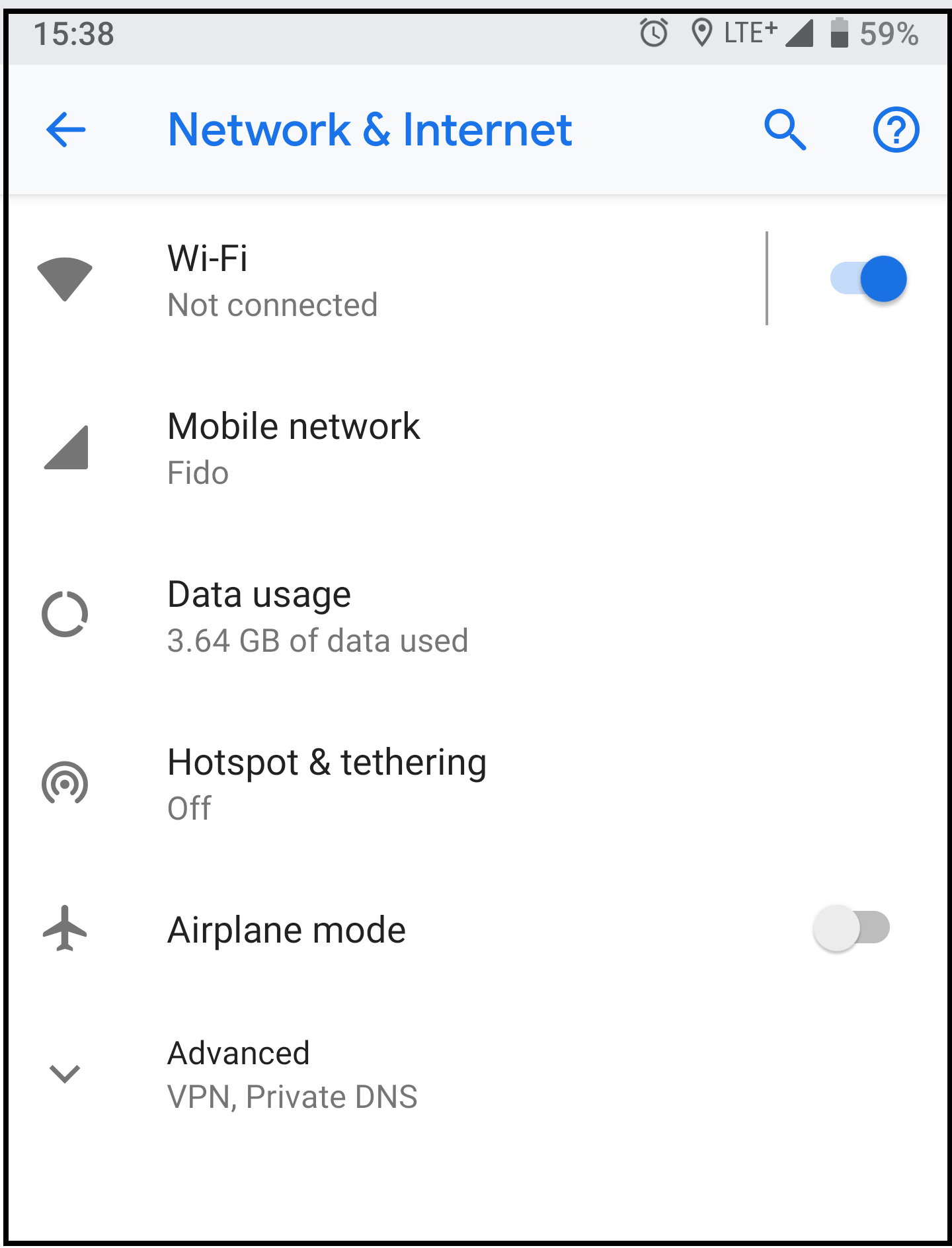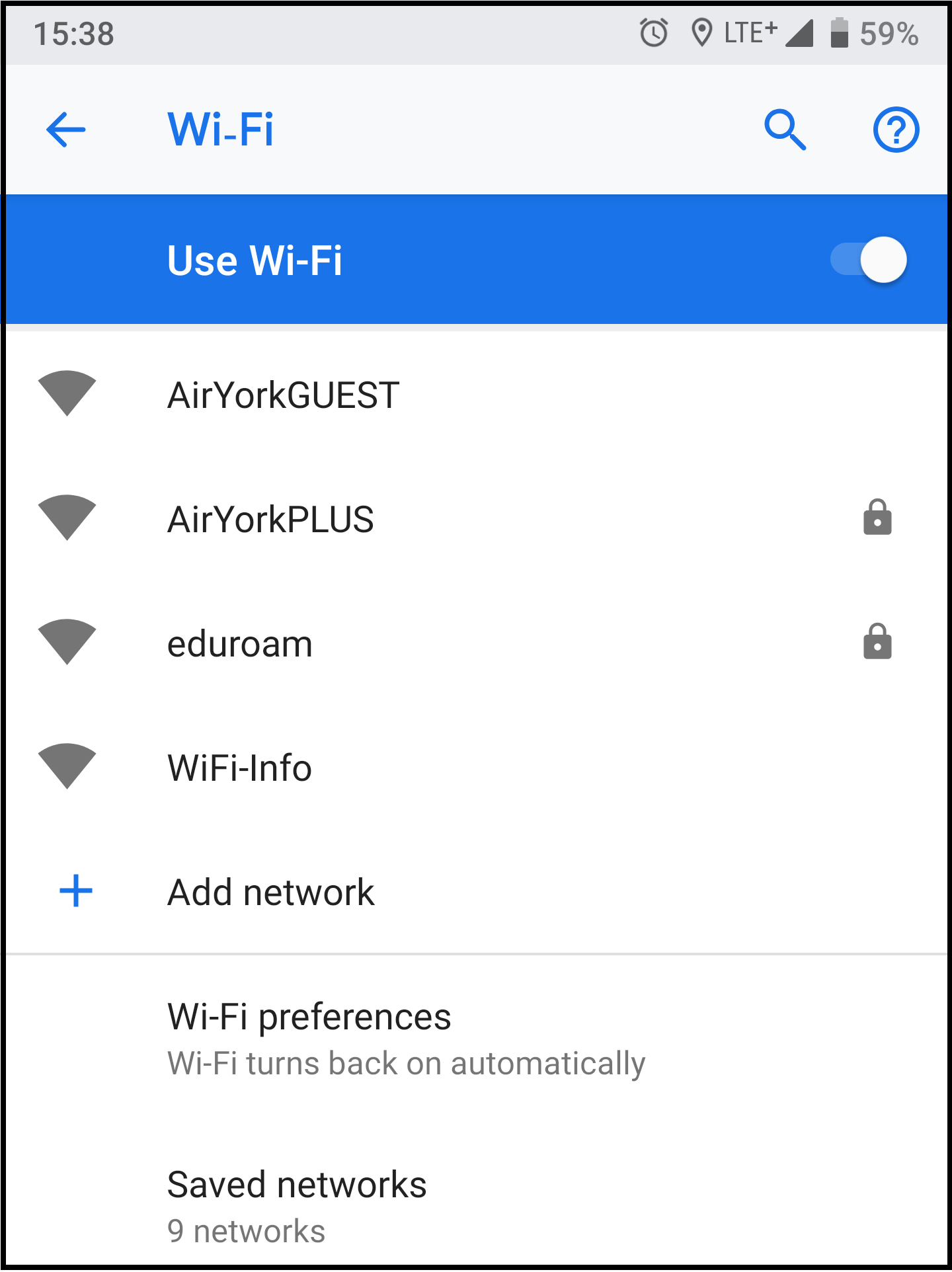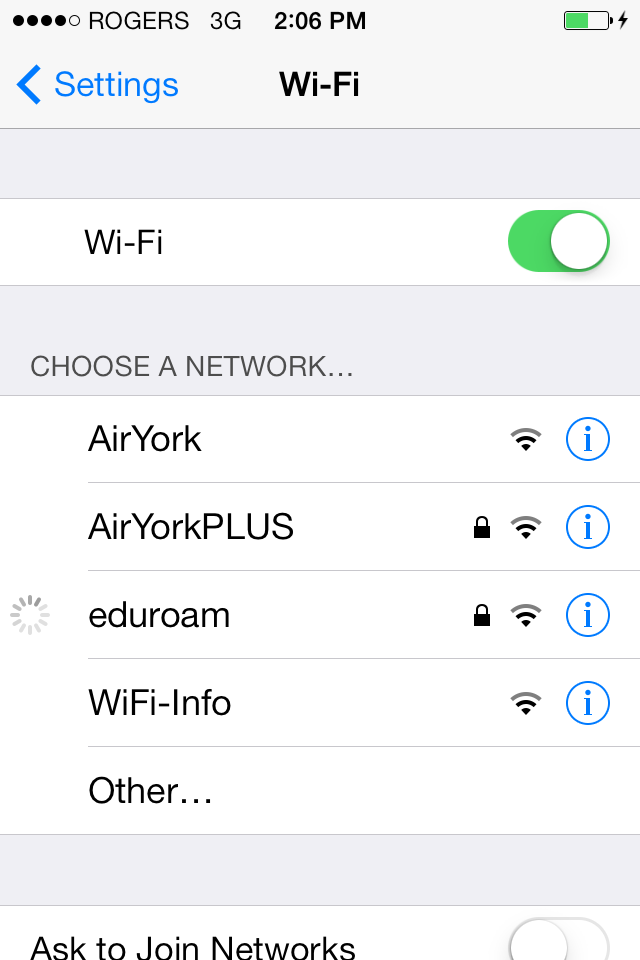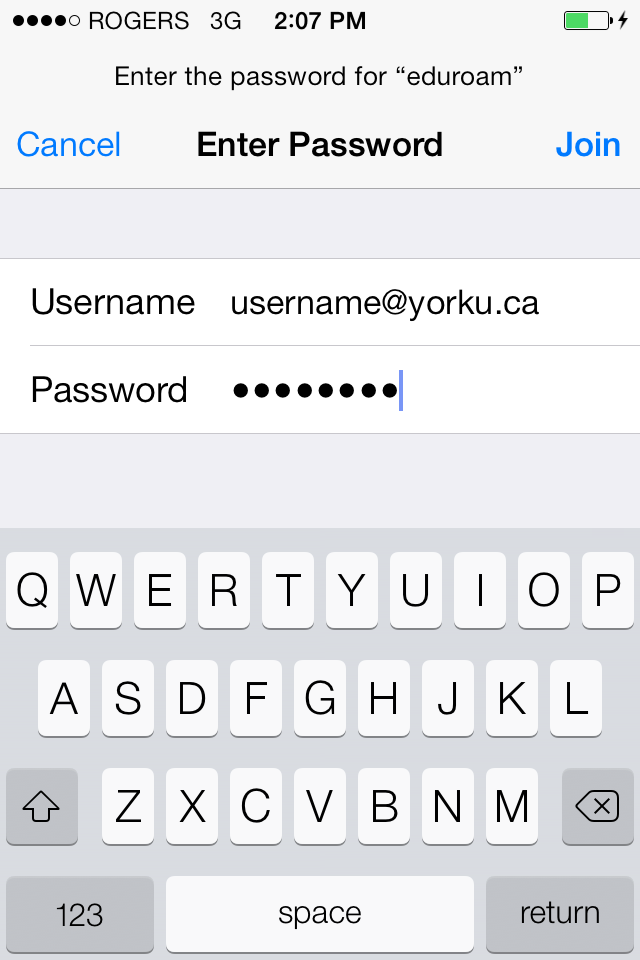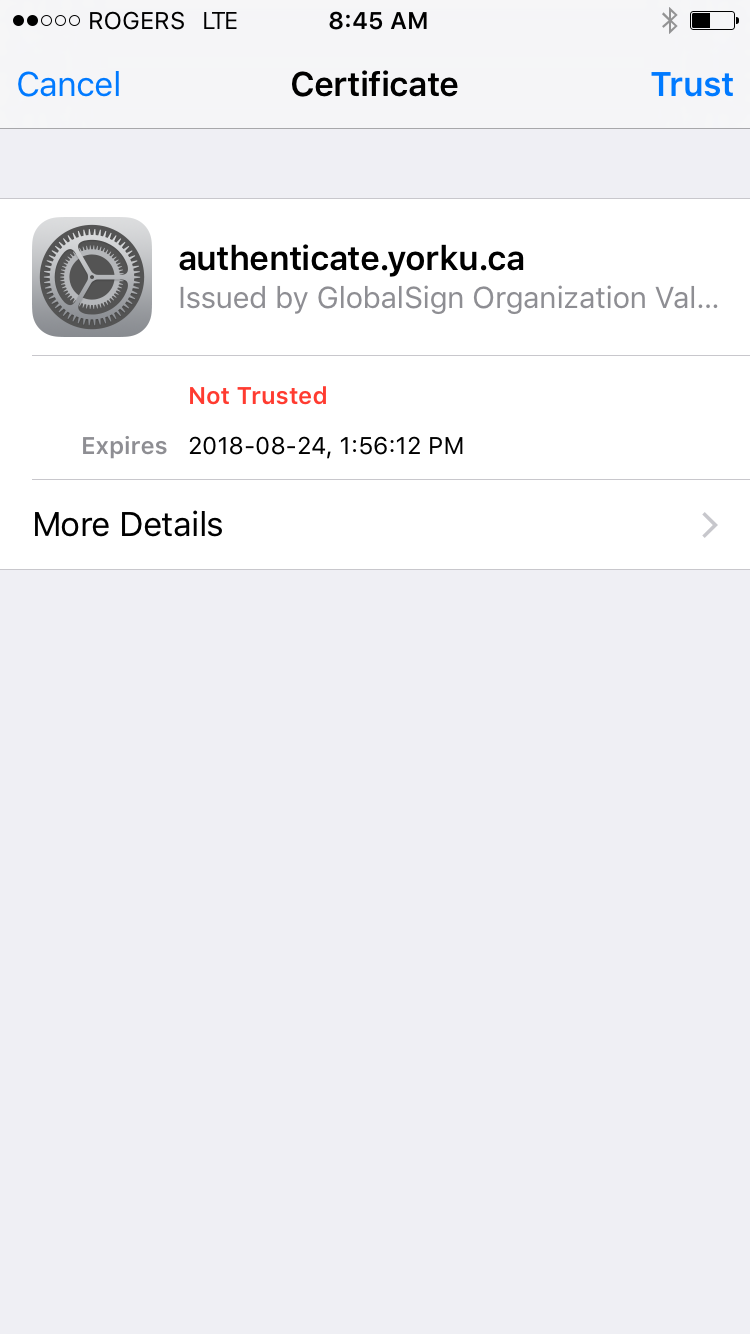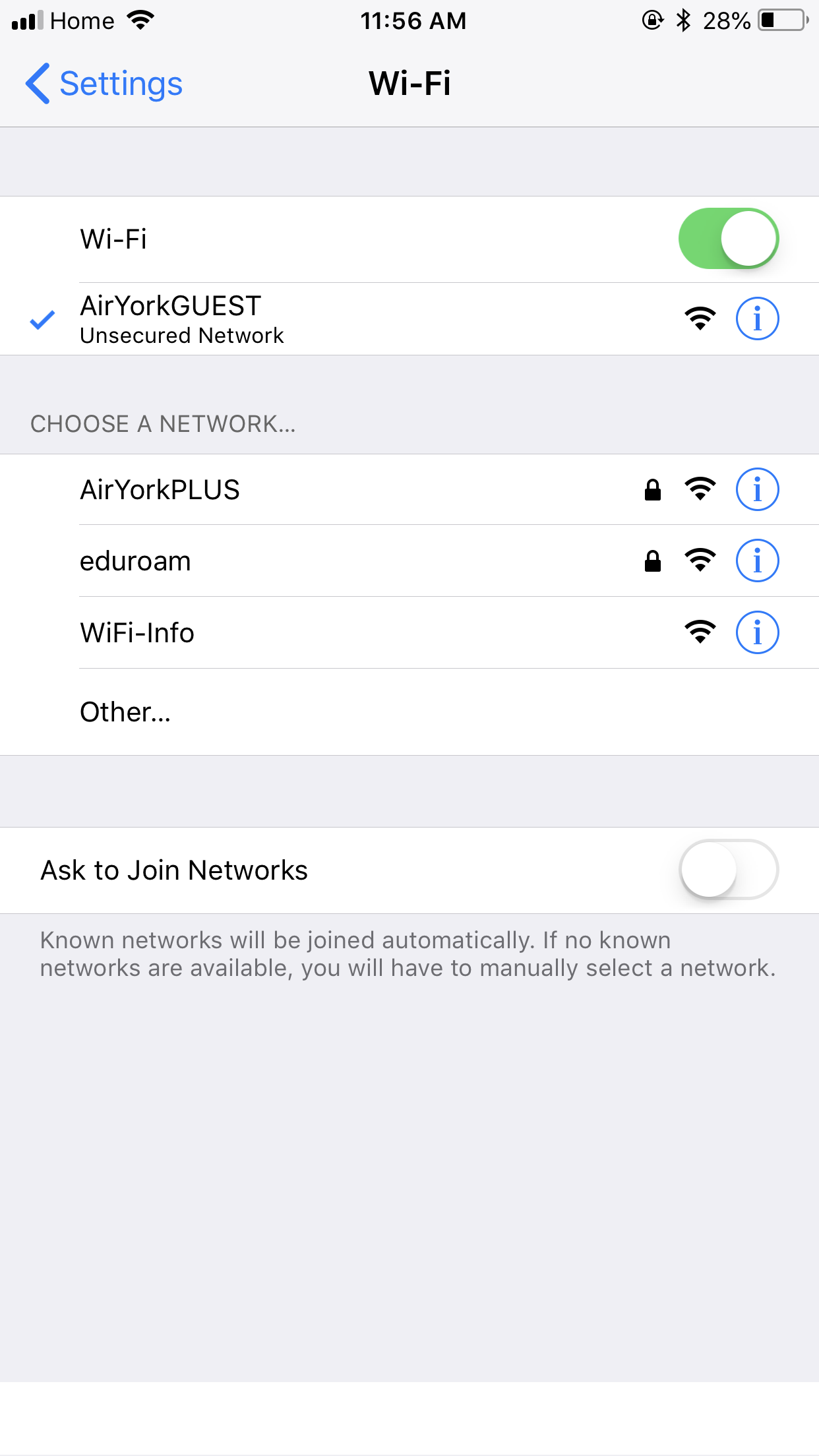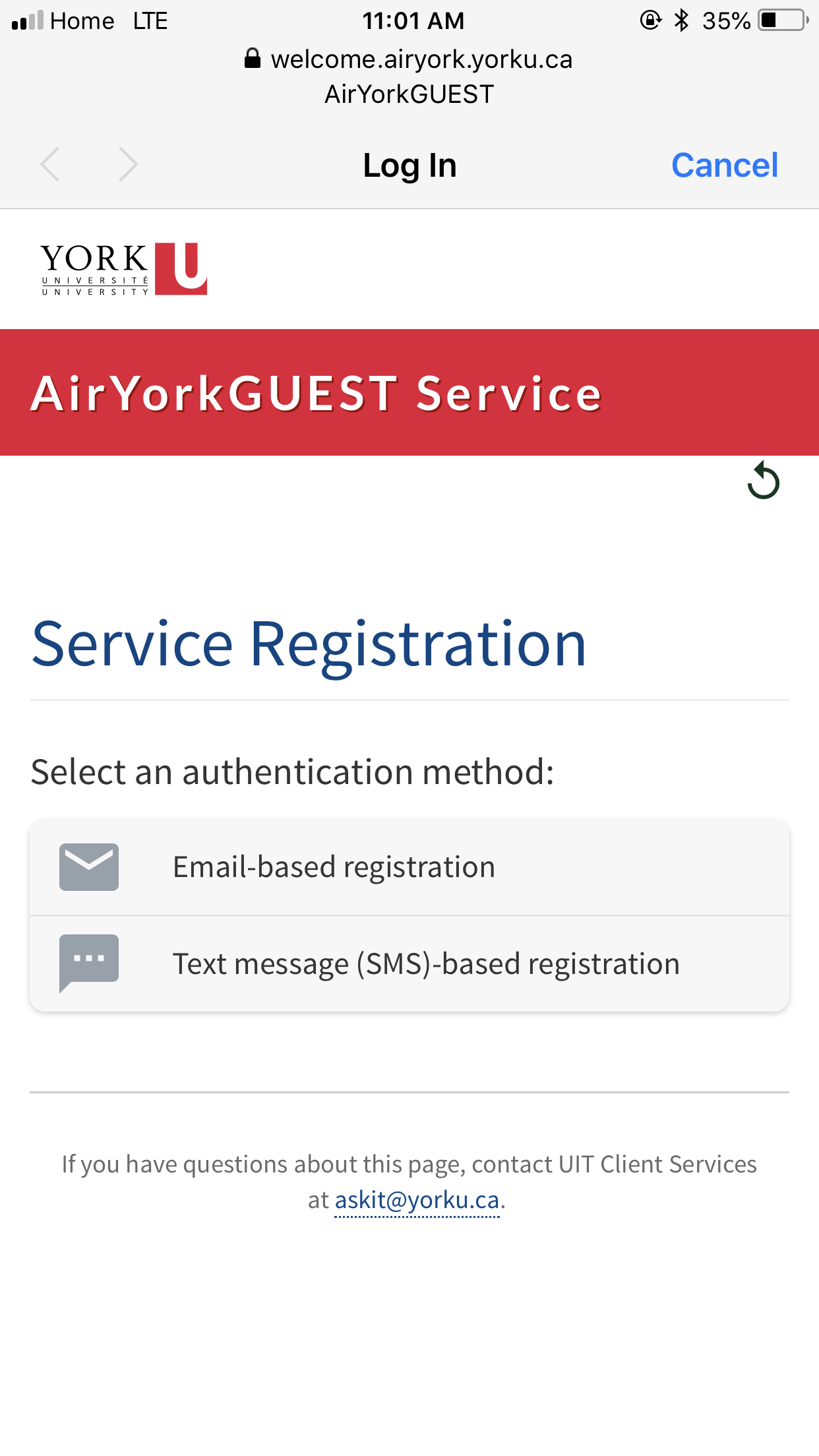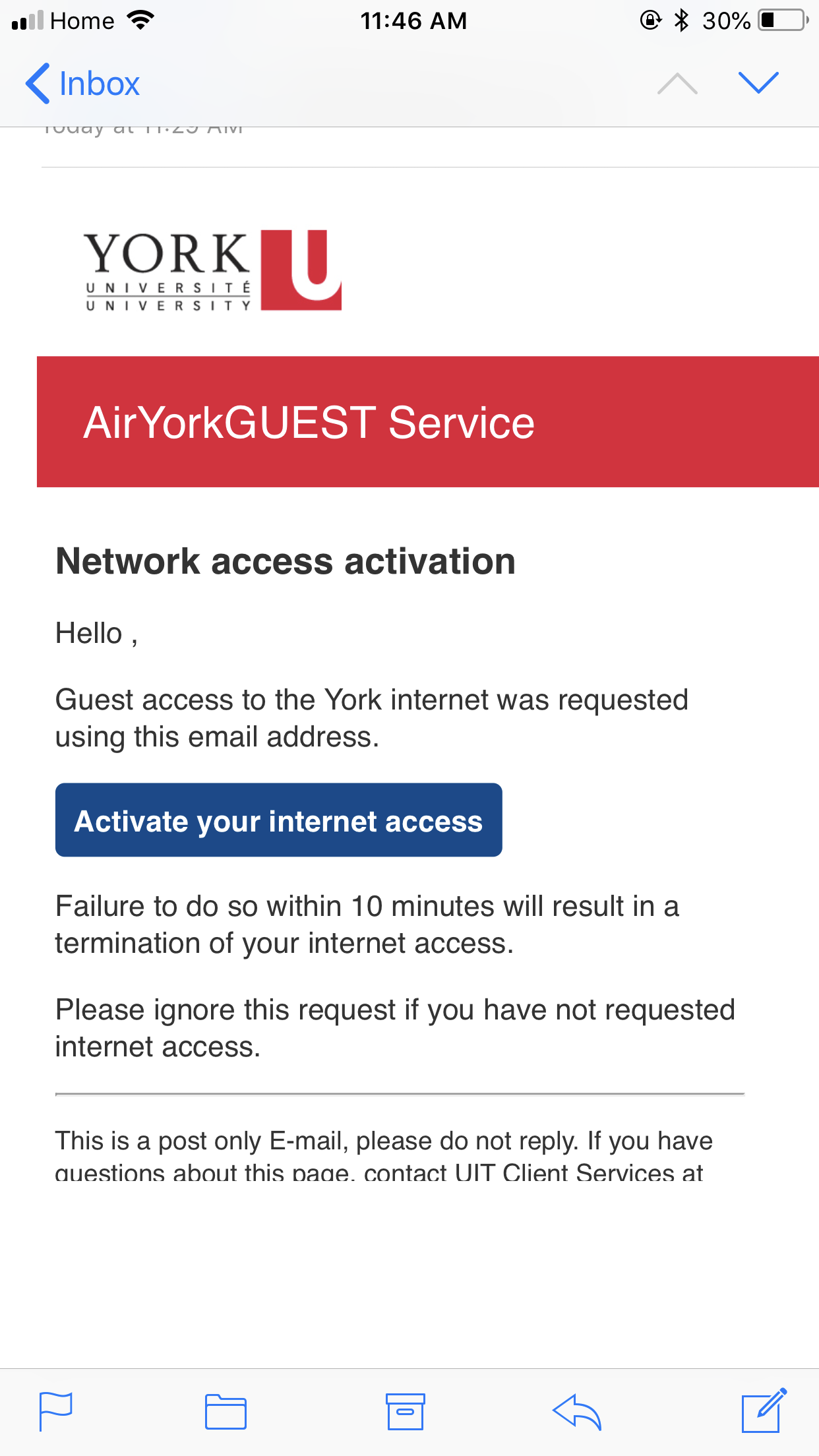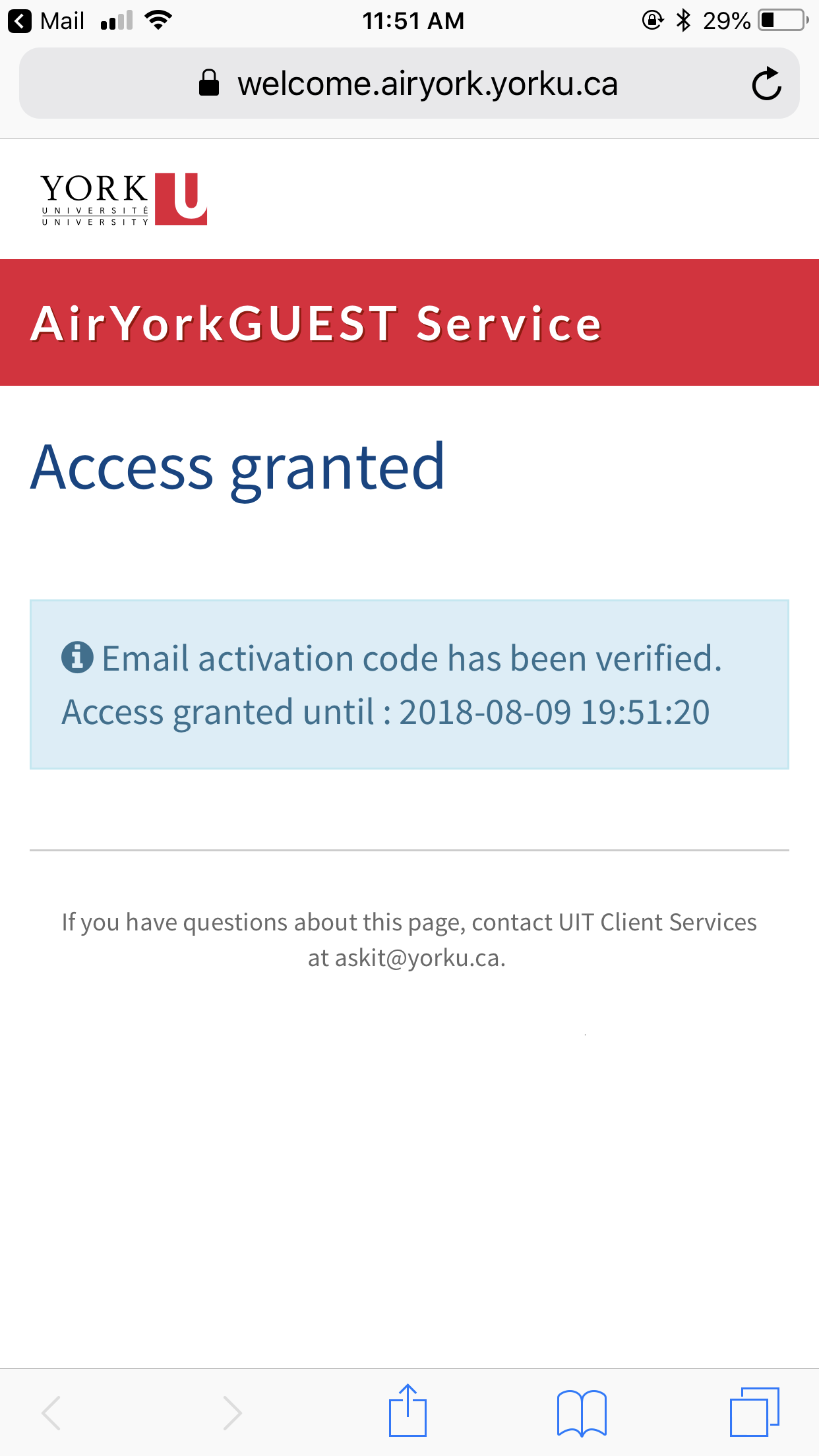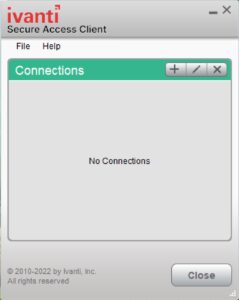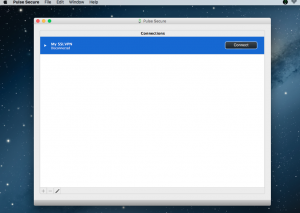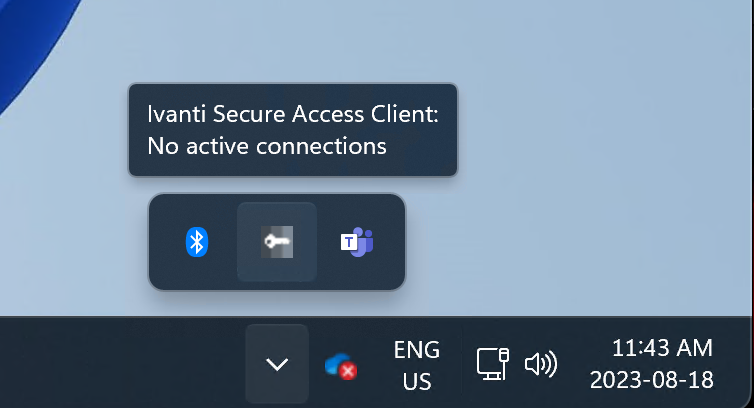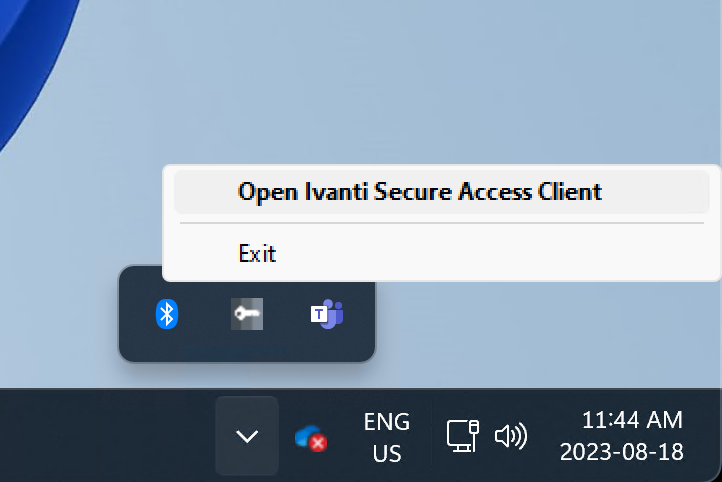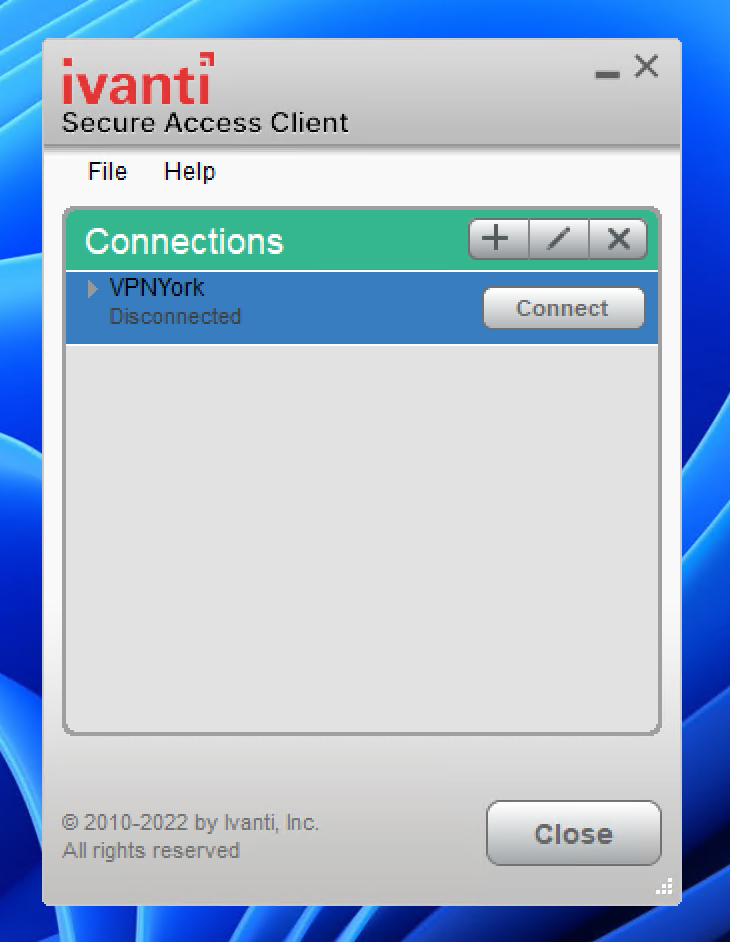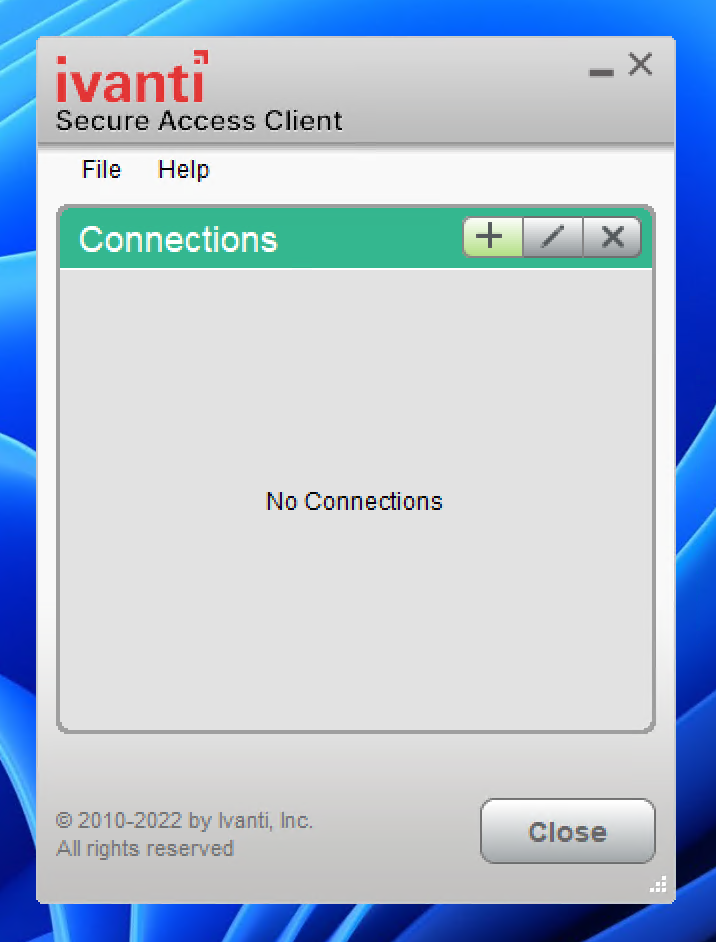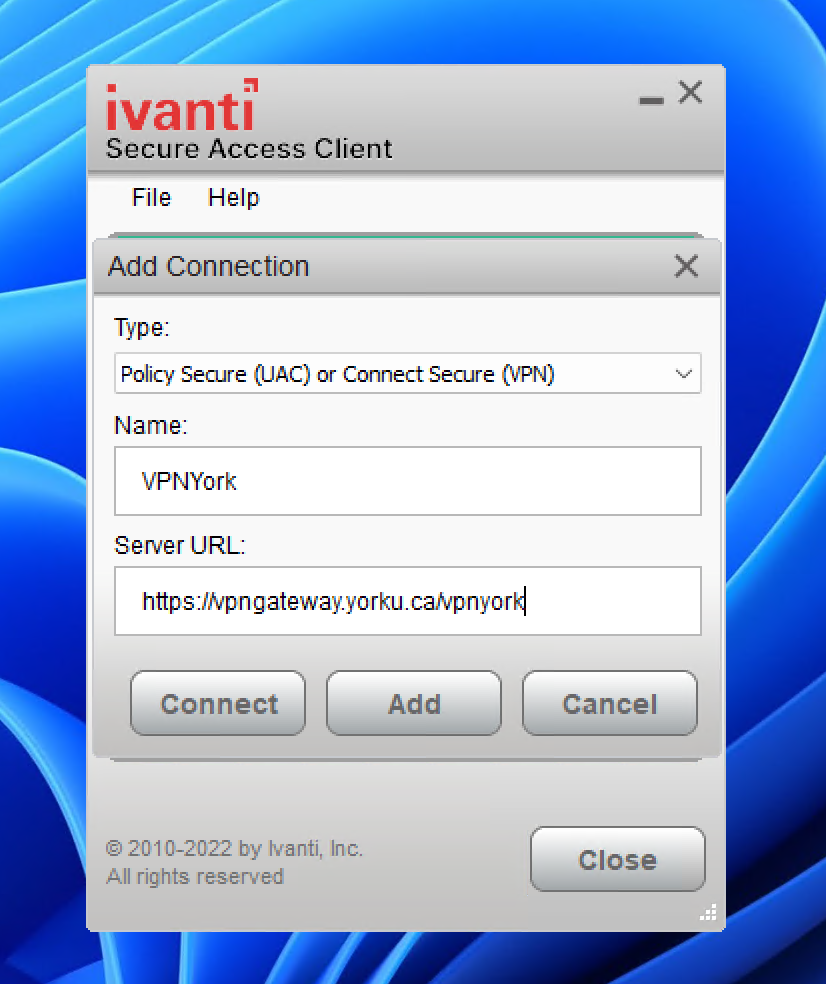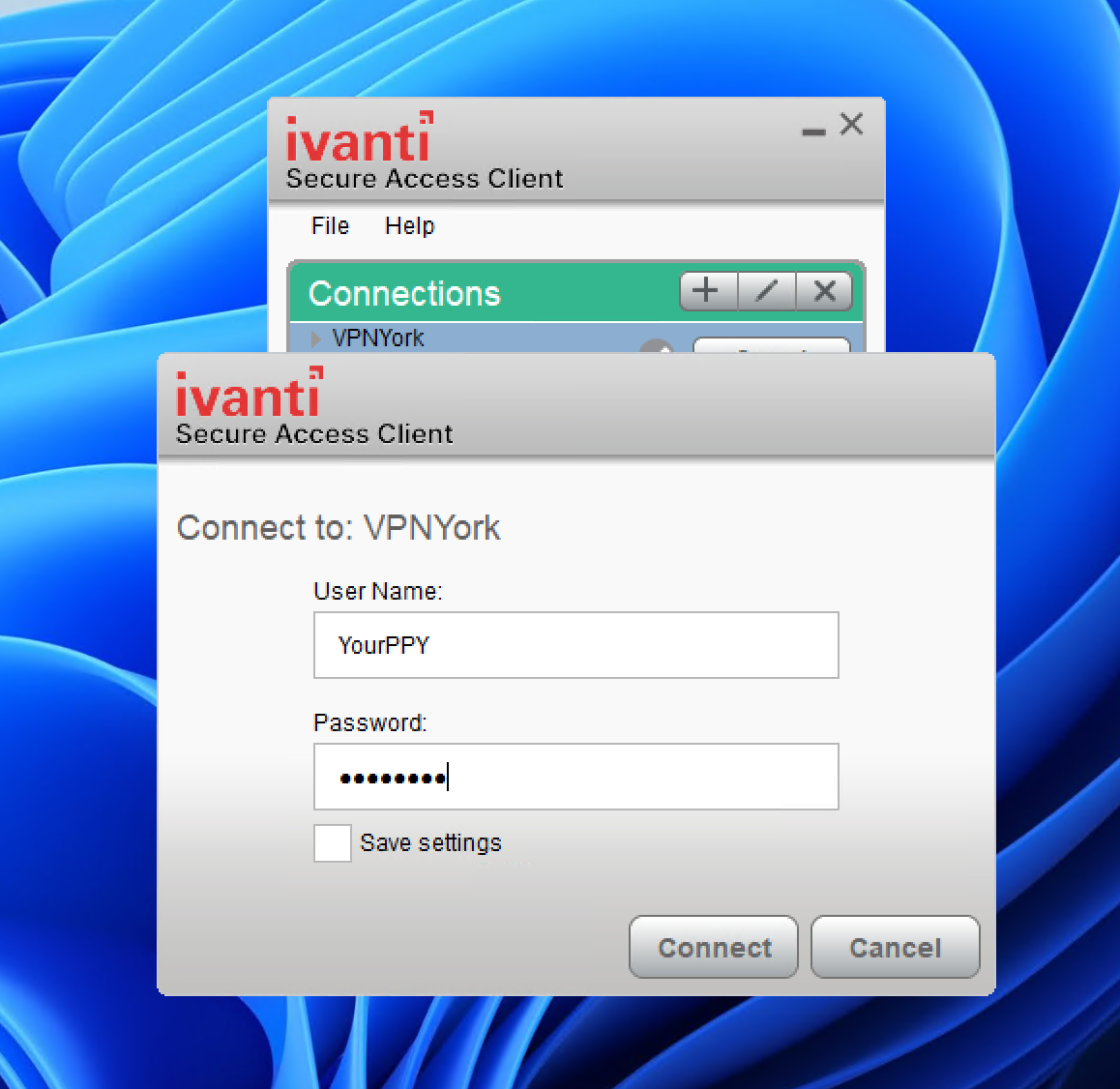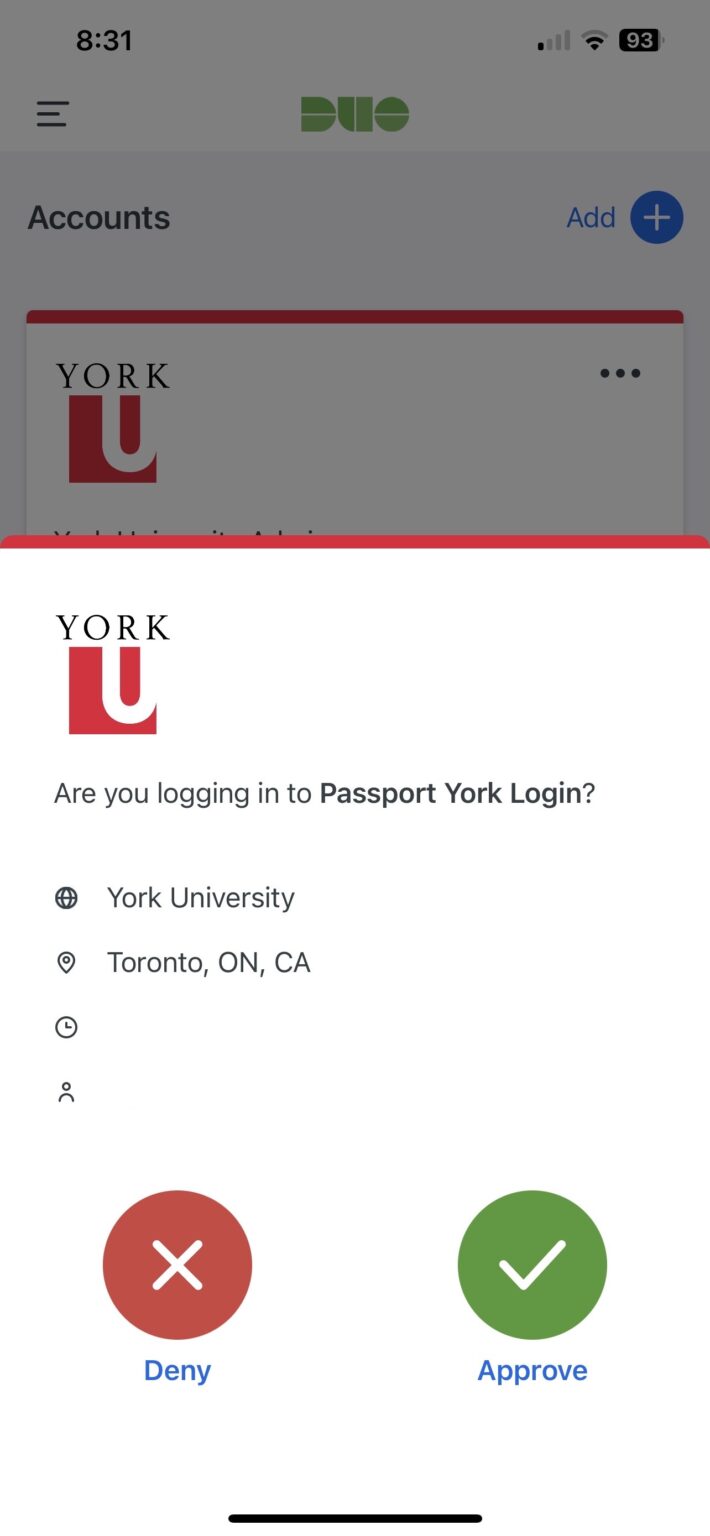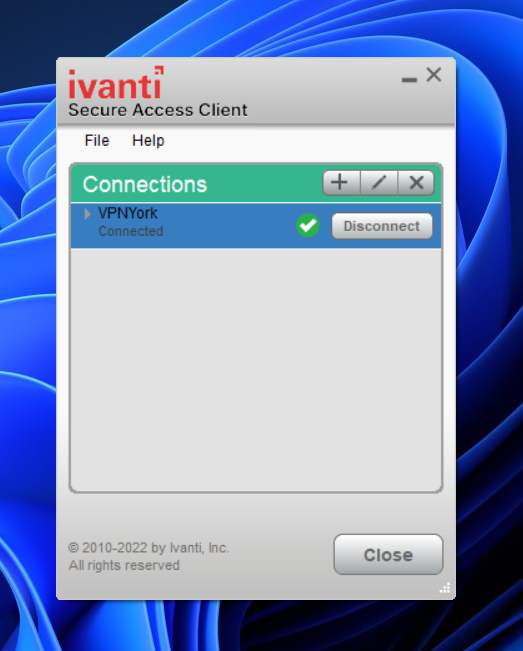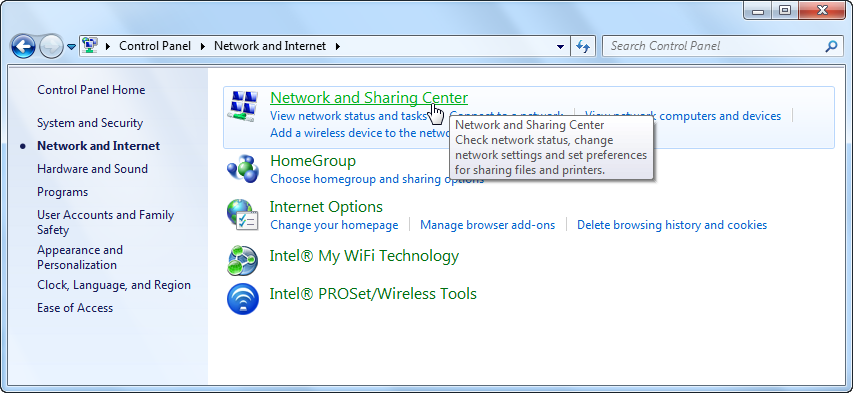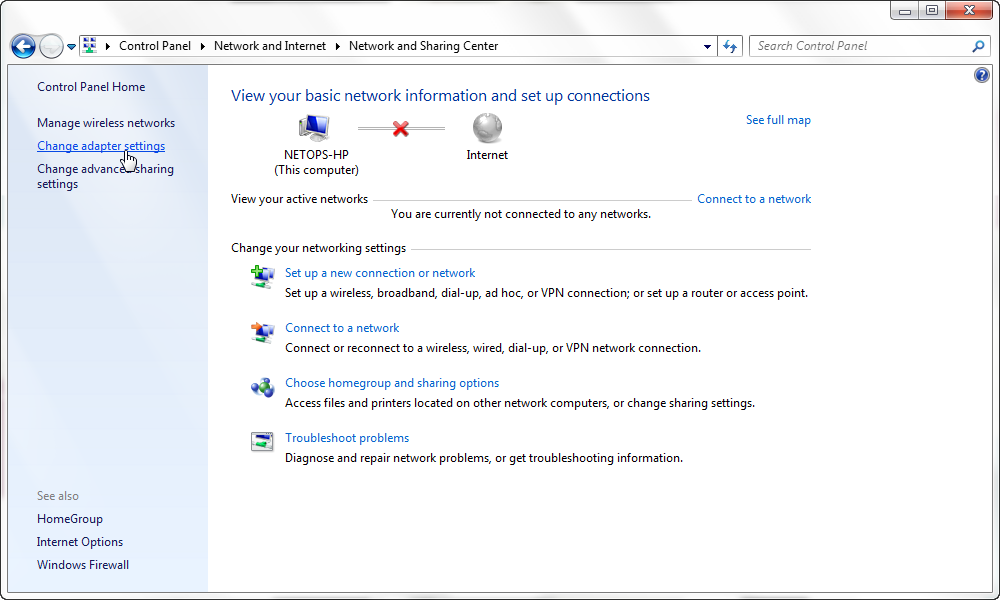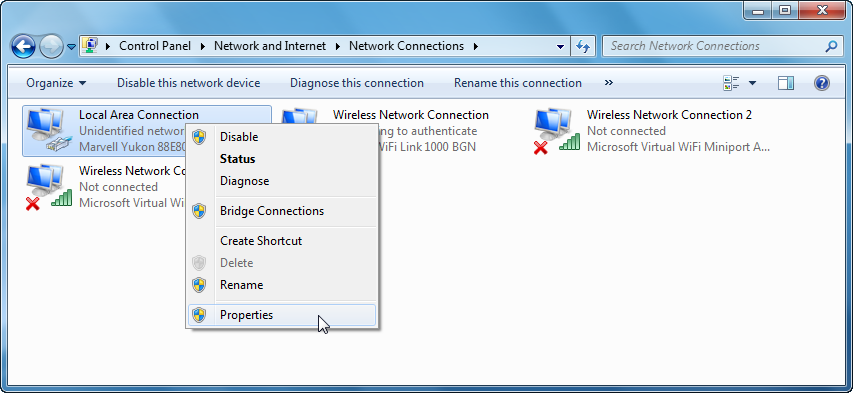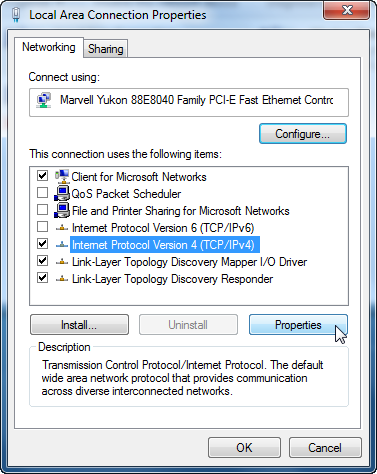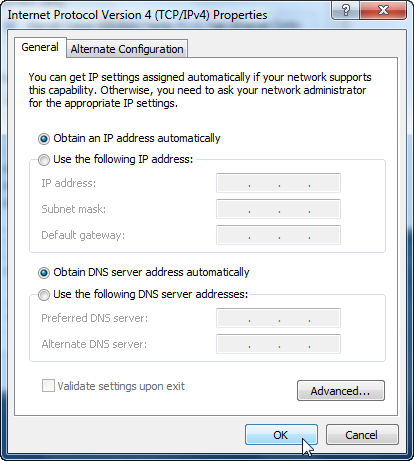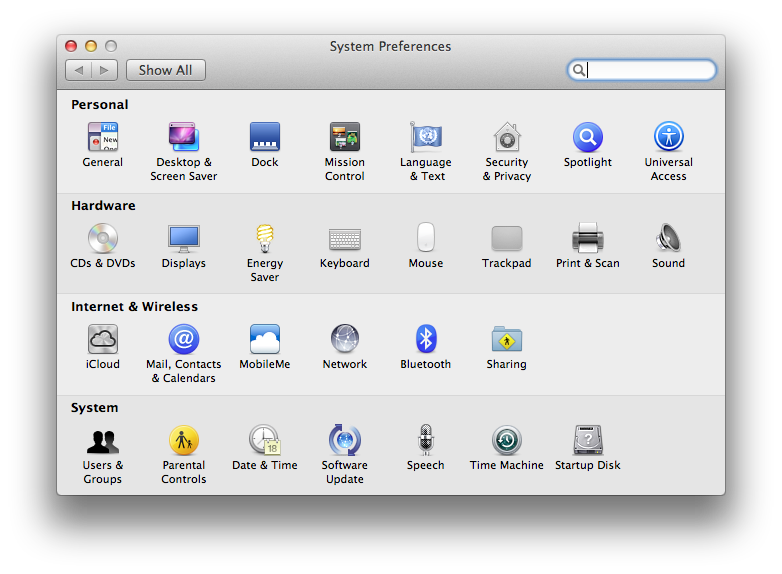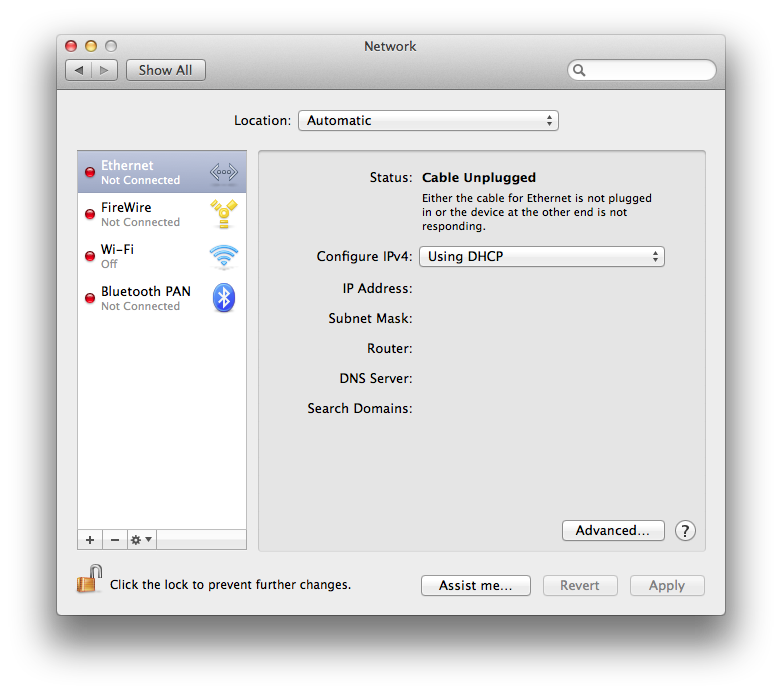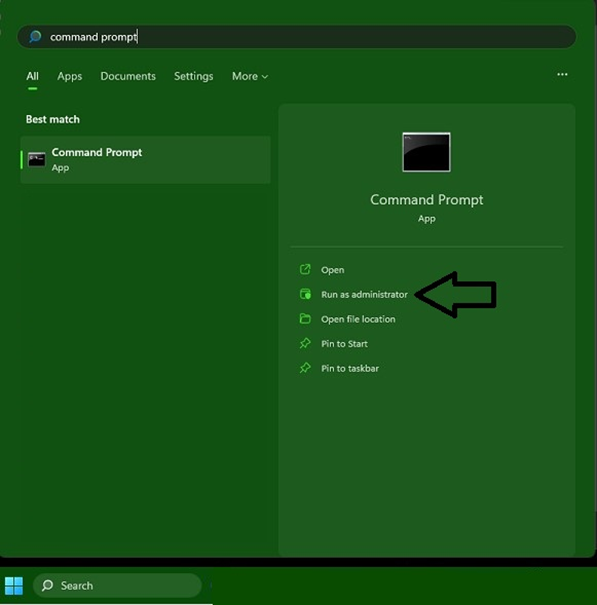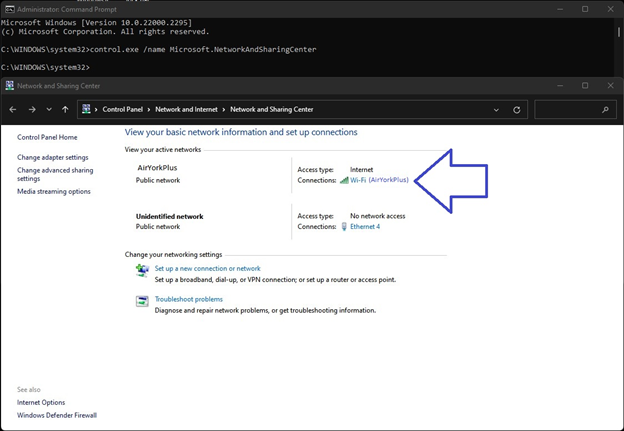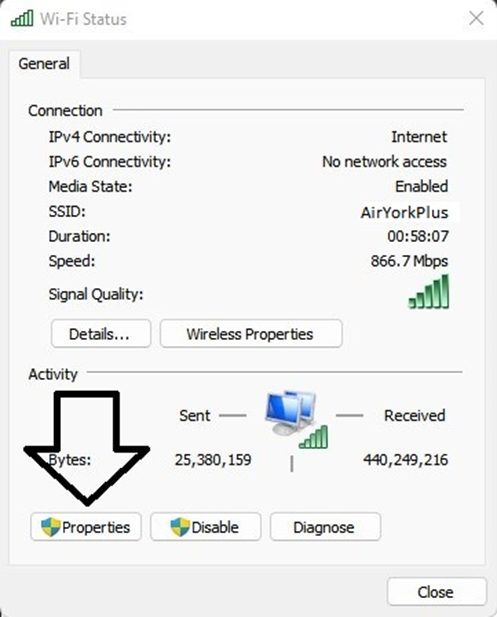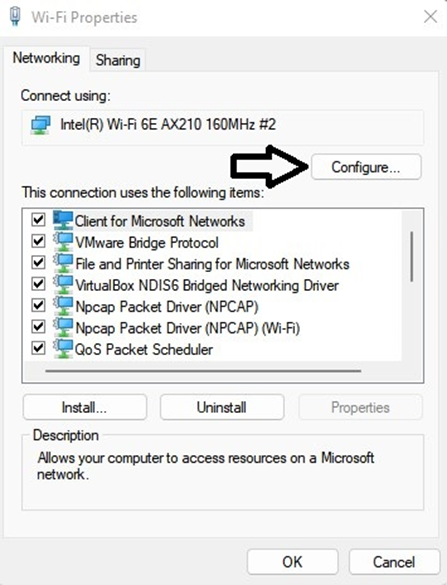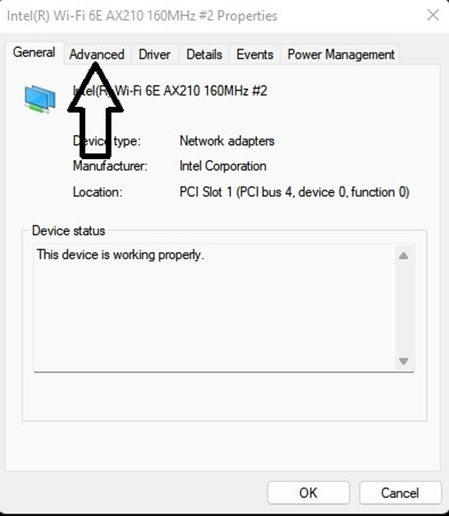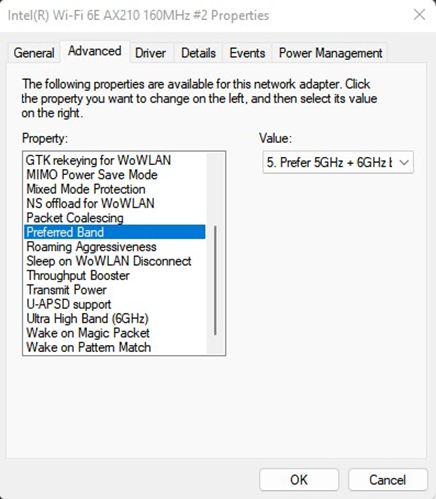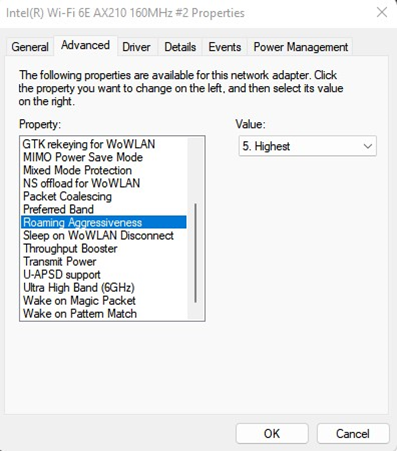York University offers a variety of internet access options to keep you connected on campus:
- AirYorkPLUS: Secure, high-speed Wi-Fi available across campus.
- eduroam: Wi-Fi for visitors from participating institutions
- AirYorkGUEST: An open Wi-Fi network for guests and visitors.
- Virtual Private Network (VPN): Securely access university resources and services from off-campus locations, ensuring your data remains protected while working remotely.
Whether you’re teaching, conducting research or working on campus, our internet services provide the connectivity and security you need. For optimal Wi-Fi performance, please consult our recommendations on choosing a Wi-Fi client device.
**Please note any other wireless networks available on campus are not supported by UIT and should be avoided.
Featured Services
Overview
AirYorkPLUS provides wireless Internet access to York community members featuring improved security, performance, convenience and mobility. It features:
Single sign on
Once you configure your Wi-Fi client (laptop or tablet computer, smartphone, etc.) with your Passport York credentials, the client will automatically connect to AirYorkPLUS as soon as it is within range of an AirYorkPLUS access point.
Security
Network traffic is encrypted between the client and the AirYorkPLUS access point.
Performance
Better performance in high-density settings such as lecture halls and libraries where many Wi-Fi clients are active simultaneously.
**Please note most performance improvement are available only to Wi-Fi devices with dual-band radios. For further details, please consult UIT’s recommendations on selecting/purchasing a Wi-Fi client device for use on-campus at York.
Who is it for?
AirYorkPLUS is for current students, faculty and staff that use Passport York login for their daily academic online activities at York University.
How so I access it?
You will need your Passport York username and password to connect to AirYorkPLUS.
Configure and connect to AirYorkPLUS as per instructions for the operating system of your device below:
Overview
eduroam provides wireless Internet access to York community members and to visitors from eduroam-member institutions. eduroam provides improved security, performance, convenience and mobility. York Community members connected to eduroam are provided the same service as if they were connected to AirYorkPLUS, and it is available in all the same locations as AirYorkPLUS. A Wi-Fi client device which is configured to use eduroam does not also require AirYorkPLUS.
Who is it for?
At York, the eduroam service is available to visitors from an eduroam-participating institution. Current students, faculty and staff of York University may access eduroam while visiting other eduroam-participating institutions.
How do I access it?
At York, the eduroam service is available to visitors from an eduroam-participating institution. Current students, faculty and staff
- Check that the institution you will be visiting is an eduroam participant at eduroam Institution List .
- Configure your computer or wireless device & connect to eduroam wireless network:
Overview
AirYorkGUEST provides casual visitors to the University with Wi-Fi Internet access. AirYorkGUEST also provides Wi-Fi network access to devices which do not have a web browser (e.g. barcode scanners, mobile printers, etc.). AirYorkGUEST is available in all the same locations as AirYorkPLUS.
NOTE
- Maximum duration of a login session is 8 hours. Upon reaching this session time limit, the connection to the AirYorkGUEST network will be terminated without warning. However, you can register again for another 8 hour session.
- **Please note AirYorkGUEST cannot be used by the community that normally uses either eduroam or AirYorkPLUS.
Who is it for?
AirYorkGUEST is for people that come on to campus and need internet service in a guest capacity, similar to being at a public library, coffee shop or a fast food restaurant.
How do I access it?
Overview:
Wired network at York is accessed by direct connection, typically using a dynamic IP address service known as Dynamic Host Configuration Protocol (DHCP).
How do I access it?
- Direct connection to the York network intended for specific hardware; no login required.
- Request LAN Drops from your local IT Support Group.
- If you do not have an IT Support Group, submit a request.
- LAN Drop ethernet jacks are usually blue.
- To apply for an IP address please submit the online IP address request form.
**Please note wired access at York typically just works. If you need help, submit a Service Request.
Overview
Secure remote access uses VPN (Virtual Private Network) technology to create a secure link between your device and the York network. This service is strongly recommended when connecting from any non-secure wireless network, such as AirYorkGUEST or public hotspots.
How do I access it?
**Please note the Ivanti Secure Access client download and setup steps are done only ONCE.
Download, install and configure an appropriate client as per table below:
If you wish to verify your hardware is compatible see: Ivanti Secure Access Client Supported Platforms
**Please note if you already have Ivanti Secure Access installed and setup for you by your Faculty IT support team read the instructions below for how to connect to York’s VPN.
Frequently Asked Questions
AirYorkPLUS FAQs
eduroam FAQs
AirYorkGUEST FAQs
VPN FAQs

Learn More
Not finding what you are looking for or need technical assistance? We are here to support you!


